Reading the weekend’s press clippings – or worse still following debates on Twitter – it appears that the most rapidly growing segments in the energy sector are instant experts and misleading factoids. At least Trump is yet to weigh in.
Too much happened in the spot market’s South Australian and Victorian regions last Thursday and Friday to attempt a full chronology or analysis here, so this post will highlight a few key aspects of the two days, based as ever on what the market data shows.
(Lack of) Reserves – What Do They Actually Mean?
Some overall impression of developing events is apparent in a simple list of AEMO’s Market Notices dealing with system reserves in Victoria and South Australia across the two days, drawn from ez2view:
The general press in particular get quite excited by these notices, seemingly without fully appreciating their content and context. As a quick reminder, “reserve” is the headroom or spare capacity between demand and available supply, and the working meaning of the different Lack of Reserve (LOR) conditions advised by AEMO is essentially:
LOR1 – available supply exceeds demand, and there is enough spare capacity to withstand loss of the largest supply source (eg the largest online generating unit) without load shedding, but not enough to withstand loss of the two largest supply sources.
LOR2 – available supply exceeds demand, but loss of the largest supply source would require load shedding to maintain supply-demand balance.
LOR3 – available supply is insufficient to meet demand so load shedding is required to maintain balance.
So a shortfall in reserves – unless it’s the LOR3 variety – does not mean that “there is not enough power available to meet demand” as the press might breathlessly report, it means that the amount of spare capacity in the system is, or is forecast to be, less than would be needed to sustain one (LOR2) or two (LOR1) contingencies. But that’s more of a mouthful and more difficult to explain than “not enough power”!
It’s also important to distinguish between actual LORx and forecast LORx conditions. Clearly an actual LOR3 condition would mean that load shedding is currently taking place. Not good. But a forecast LOR3 condition would mean that based on current forecasts of demand and available supply, load shedding would be required at some future time. Like all forecasts, this is based on uncertain and changing information about the future so may or may not come to pass.
It’s apparent from the list above that most of the Lack of Reserve notices published by AEMO deal with forecast LOR conditions. AEMO has obligations under the market rules to continuously monitor the forecast level of system reserves and notify the market whenever a potential lack of reserve condition is forecast. In large part this is to encourage market participants to make more supply available to the market, but in the case of forecast LOR2 and LOR3 conditions, AEMO can intervene in the market, for example by issuing directions or triggering RERT contracts it may hold (more on this later if time permits).
It should be obvious why LOR2 conditions are the threshold for AEMO to act – leaving the system without the headroom to sustain sudden loss of its largest generating unit without load shedding wouldn’t be prudent.
Market Outcomes on Thursday and Friday Jan 18-19
To a large extent Victoria and South Australia behaved as one combined region over the two days, with supply from NSW and Tasmania flowing in across constrained interconnectors, but flows between Vic and SA being unconstrained for many of the key periods. This is reflected in the price outcomes in the two regions following each other quite closely in the chart below:
For this reason I’ve plotted combined Vic + SA demand and combined supply availability rather than individual state totals. There are two lines representing supply availability on this chart, one being generation within the two states, and the second adding to this actual flows on the interconnectors from adjoining regions (hence this being less than available generation during the low demand overnight periods when exports often flow to NSW and Tasmania out of the Vic / SA region.)
We can get some perspective on the level of demand reached across the two states last week by looking back at previous summers’ maximum demand levels for the combined region:
At just over 12,000 MW (reached at 7pm AEDT on Thursday), last week’s maximum for “Operational Demand” (as well as scheduled demand, this measure includes supply from large non-scheduled generation, principally older windfarms) was higher than in recent years, but still well below historic maximums reached in the 2006/7 to 2013/14 period. But supply from rooftop PV is now much greater than it was 10 or even 5 years ago, and is not counted in the Operational Demand, so I’ve used AEMO’s estimates of rooftop PV output to calculate what grid demand would have been without that PV supply, yielding a maximum of just under 13,000 MW, which is more comparable with previous highs. So despite not being fully out of the summer holiday season, last week’s was clearly a relatively high demand event.
Loy Yang B1 Trip
As shown in the annotations on the market outcomes chart, and fairly widely reported at the time and over the weekend, a unit at Loy Yang B tripped suddenly from 528 MW at about 4:30pm AEDT on Thursday (3:30pm NEM time). Obviously the system physically sustained that sudden loss – as it’s designed to, with a range of frequency control ancillary services kicking in – but within half an hour 5 minute dispatch prices rose to $9,999.81/MWh in Victoria and over $11,000/MWh in South Australia. ez2view’s Price Setter widget shows that prices in both regions were being set by Jeeralang gas turbine units in Victoria, with the higher price in South Australia reflecting losses across the Heywood interconnector.
Subsequently, dispatch prices in South Australia reached the Market Price Cap of $14,200/MWh, set by bids at Torrens Island Power Station (TIPS) and stayed close to this level until the tripped unit at Loy Yang B was returned to service and restored output over about an hour from 6:15pm AEDT.
Torrens Island Bidding
With many of the highest prices across Thursday and Friday being set by bids from AGL’s Torrens Island, it’s worth looking more closely at the bidding behaviour of the largest participant in the South Australian market. The Bid Stack view in ez2view shows the station’s bids over the two days:
One notable thing here is the “hard boundary” between capacity priced at the MPC (the green bid band) and that priced below $600/MWh (all the other bid bands with offered volume greater than zero MW). This pattern of bids with very little volume offered between ~$1,000/MWh and ~$10,000/MWh has become very common in the NEM over the last few years.
Exporting the bid data, simplifying it into just two “high” (MPC) and “low” (sub-$600/MWh) price bands, and overlaying dispatch targets and price outcomes shows output levels from TIPS across the two days and how these related to periods with the highest price outcomes – interestingly TIPS had more undispatched capacity offered at the market price cap during the periods of highest prices than it did in some nearby time periods where prices were lower
Overall this illustrates that
- whilst prices reached the MPC on both days, there were still material volumes of available generation undispatched (at both TIPS and other generators across Vic and SA)
- AGL, and other generators with undispatched capacity, were presumably financially comfortable with spot prices reaching these levels – if not they could have rebid that capacity to lower prices. Conversely there would have been other participants negatively exposed to these high prices – it’s quite possible that Thursday’s trip at Loy Yang B may have been relatively costly for its new owner Alinta. But without knowing details of any participants’ hedging contract and retail positions, this is simply speculation.
In Summary
Plenty more could be drawn from the market outcomes, data, and behaviour seen last week. Despite some of the overhype in the press, Thursday’s and Friday’s market outcomes are not unprecedented and did not represent a system completely on the precipice of failure.
But with extreme heat in most of NSW today and more forecast for the southern states later this week – although fortunately (from a power market perspective) falling across the long weekend – the summer is far from over.
About our Guest Author
 |
Allan O’Neil has worked in Australia’s wholesale energy markets since their creation in the mid-1990’s, in trading, risk management, forecasting and analytical roles with major NEM electricity and gas retail and generation companies.
He is now an independent energy markets consultant, working with clients on projects across a spectrum of wholesale, retail, electricity and gas issues. You can view Allan’s LinkedIn profile here. Allan will be sporadically reviewing market events here on WattClarity Allan has also begun providing an on-site educational service covering how spot prices are set in the NEM, and other important aspects of the physical electricity market – further details here. |


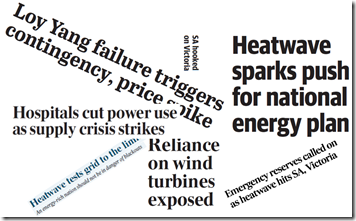
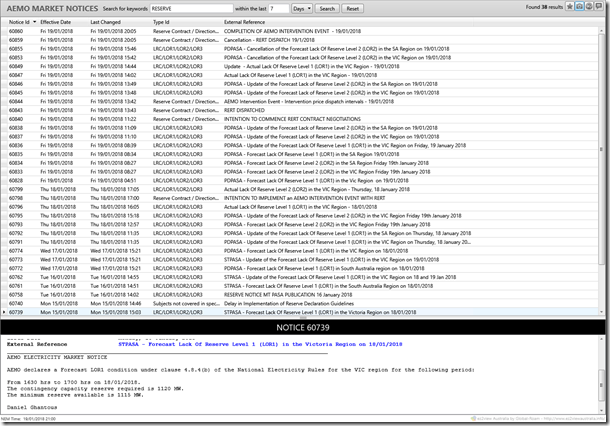
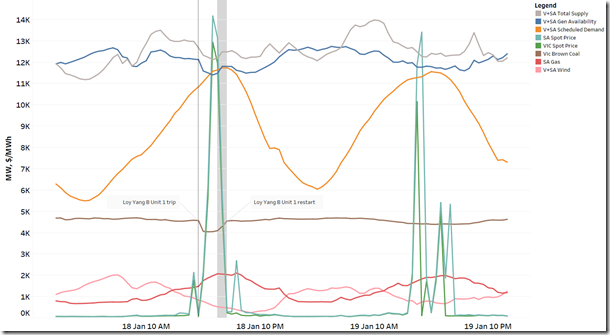
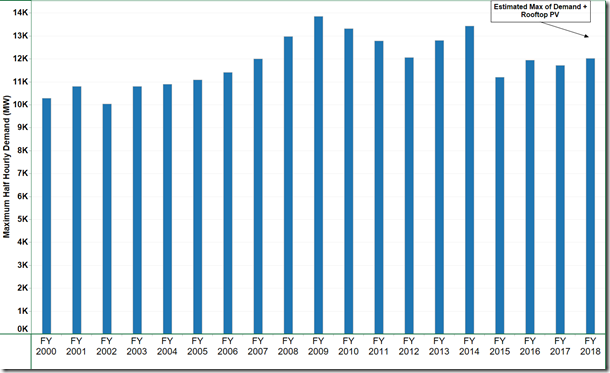
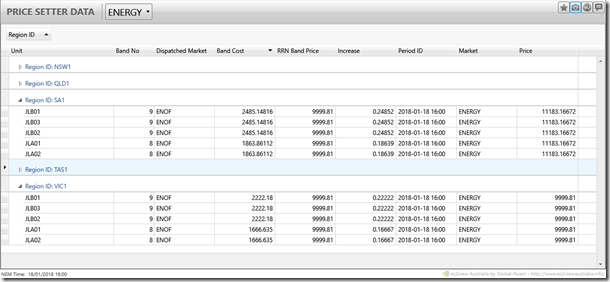
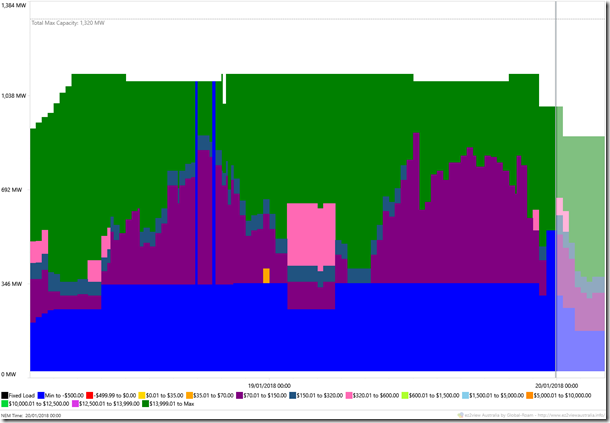
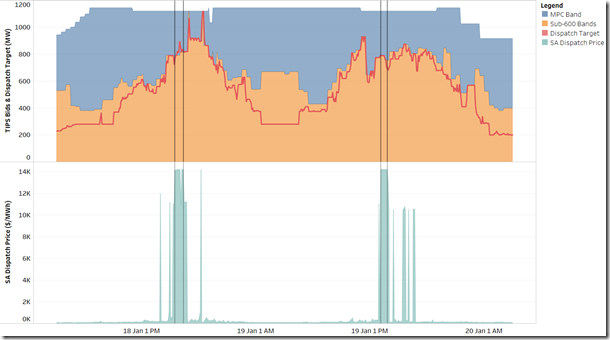
Thanks Allen,I,ve only found & been following Watt Clarity for the last 5 weeks or so and commend you on your contribution to enlighten us mer uneducated public on the workings of the national grid system and your unbiased accessments of the vaigrencies with in of its very intricate workings.Please keep your observation coming so some of us can glean some more enlightenment.
Thanks Allen. Great blog.
What conclusions do you draw from the trip at Loy Yang B? Do you think this reflects a broader reliability challenge or just an unfortunate malfunction?
It’s a great question Dean but one for which I haven’t assembled the evidence to judge either way.
What is certain is that large-scale thermal generation units – particularly coal fired ones – are very complicated pieces of machinery with many intricate subsystems. There are plenty of points of failure so it’s no surprise that across the whole coal fleet we do see unit trips and unplanned outages or capacity reductions relatively frequently. And as with (much) simpler machines like cars, it can be harder to keep them running optimally as they age.
But I haven’t seen clear evidence on trends, although I’m sure owners and system operators must be monitoring these closely.
Hi Allen,
You are a great communicator yourself – great writings, but I don’t agree with your criticism of the uninformed twitterites. If the information is kept to just the Experts then they can use all the jargon they like if that helps. But if the public is offered the same information in the name of openness then the responsibility for accurate communications rests wholly with the speaker not the listener. If the public don’t appreciate the differences between LOR1 and LOR3 that is the fault of those that use such dreadful jargon. It reminds me of NASA’s jargon with the moon project. They used that jargon for the same reason that scholars once spoke to one another in Latin. It was to impress people not to communicate. If the this industry must speak they way they do then the fault in communications is 100% with industry. Courts are open so that justice is seen to be done. Judges don’t talk to the Jury in long words they speak so they can be understood. This industry if they speak so the public can hear what is being said needs to gets their communications in better shape. I don’t think it adds to the debate to poke fun at how the public does not understand what is being said. The industry needs more folk like you, Allen.
Fair comment Ken, my dig at “instant experts” on twitter could have been better directed at people there – including those who know the subject matter reasonably well – presenting highly partial views and data.
On something like the LOR issue I certainly don’t expect the public to know the jargon or appreciate its nuances but the journalists reporting to the public could generally do a better job of informing themselves IMHO.